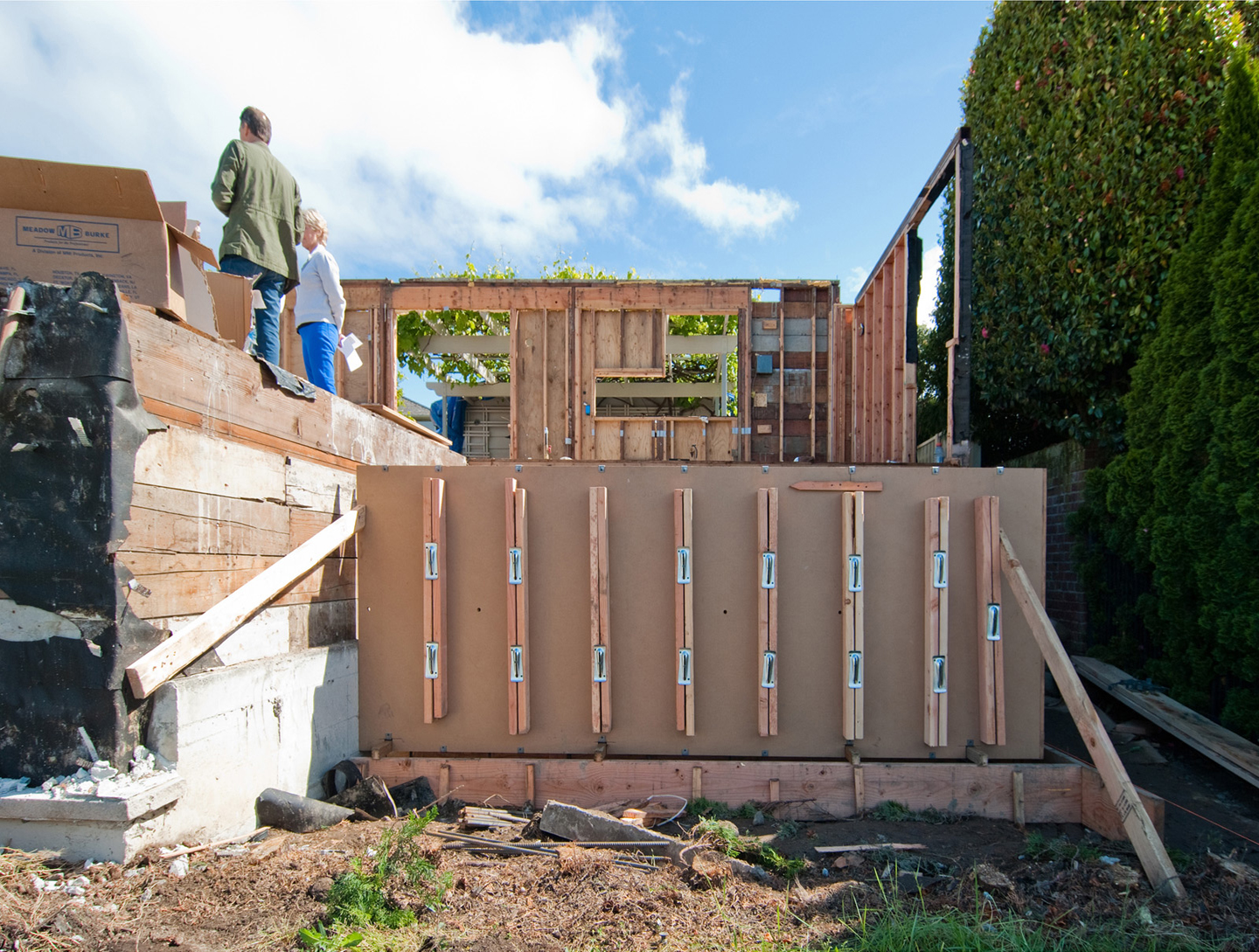
[All photos by BUILD LLC]
We showed up for a site meeting at our Magnolia project last week and found a nice example of concrete formwork built by the hardworking guys at Rivera 26 Remodeling. The assembly included the formwork for the footings and the foundation walls all together, allowing for one continuous pour, known in the industry as a mono-pour. It got us thinking about construction efficiencies and time-saving techniques. So … today’s post focuses on the merits of the mono-pour.
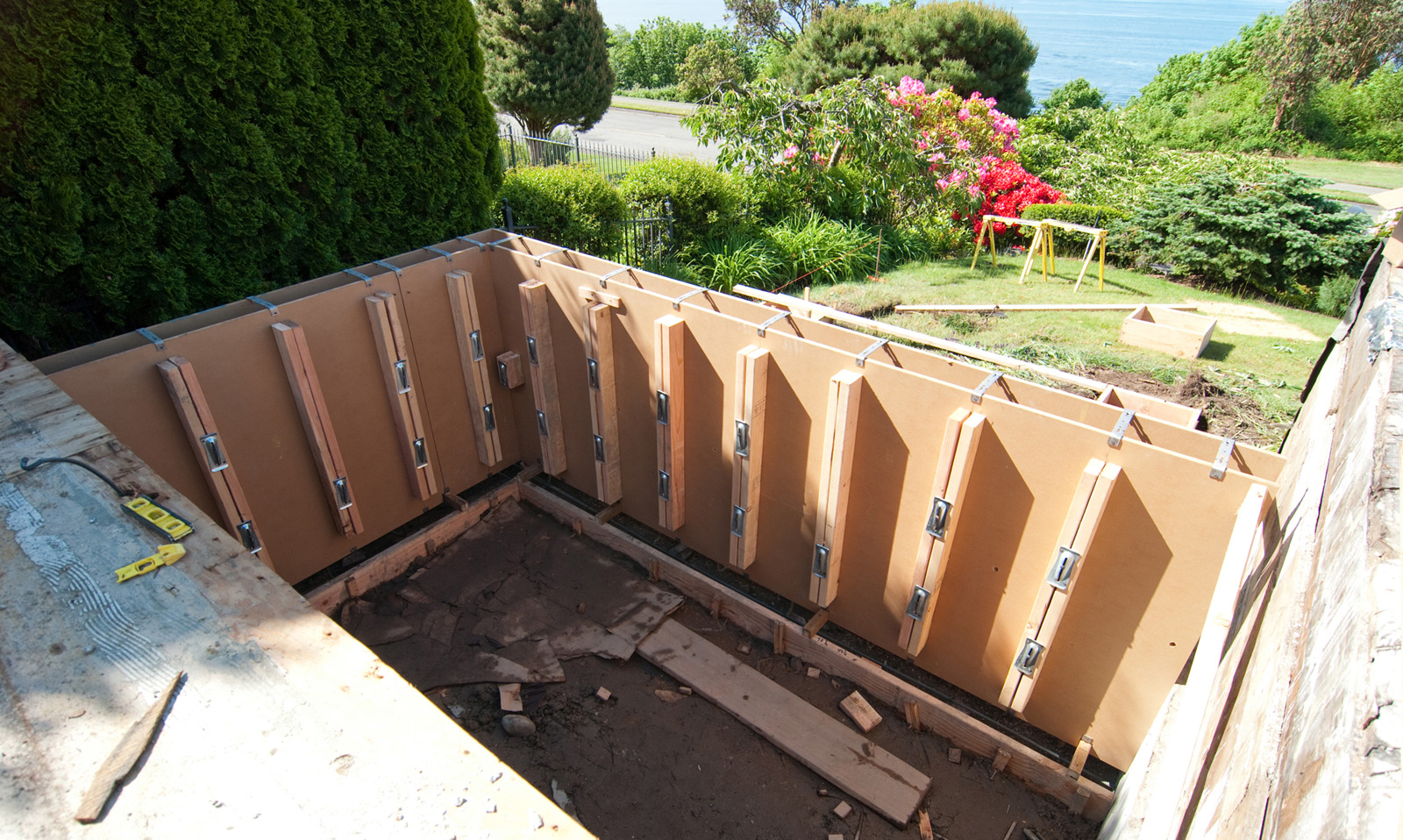
This remodel is located in a particularly sensitive area of Seattle on the opposite side of the Magnolia bluff and sits adjacent to a public park space. Part of the remodel strategy was to touch the ground lightly and only add new foundation work where absolutely necessary. Performing less earthwork means less scrutiny in the permitting process and fewer hoops to jump through with the environmental critical areas requirements. Subsequently the entire remodel adds up to only a half dozen new pad footings (2 of them internal to the house) and about 22 linear feet of new foundation wall outside — a fraction of what would be required by most additions.
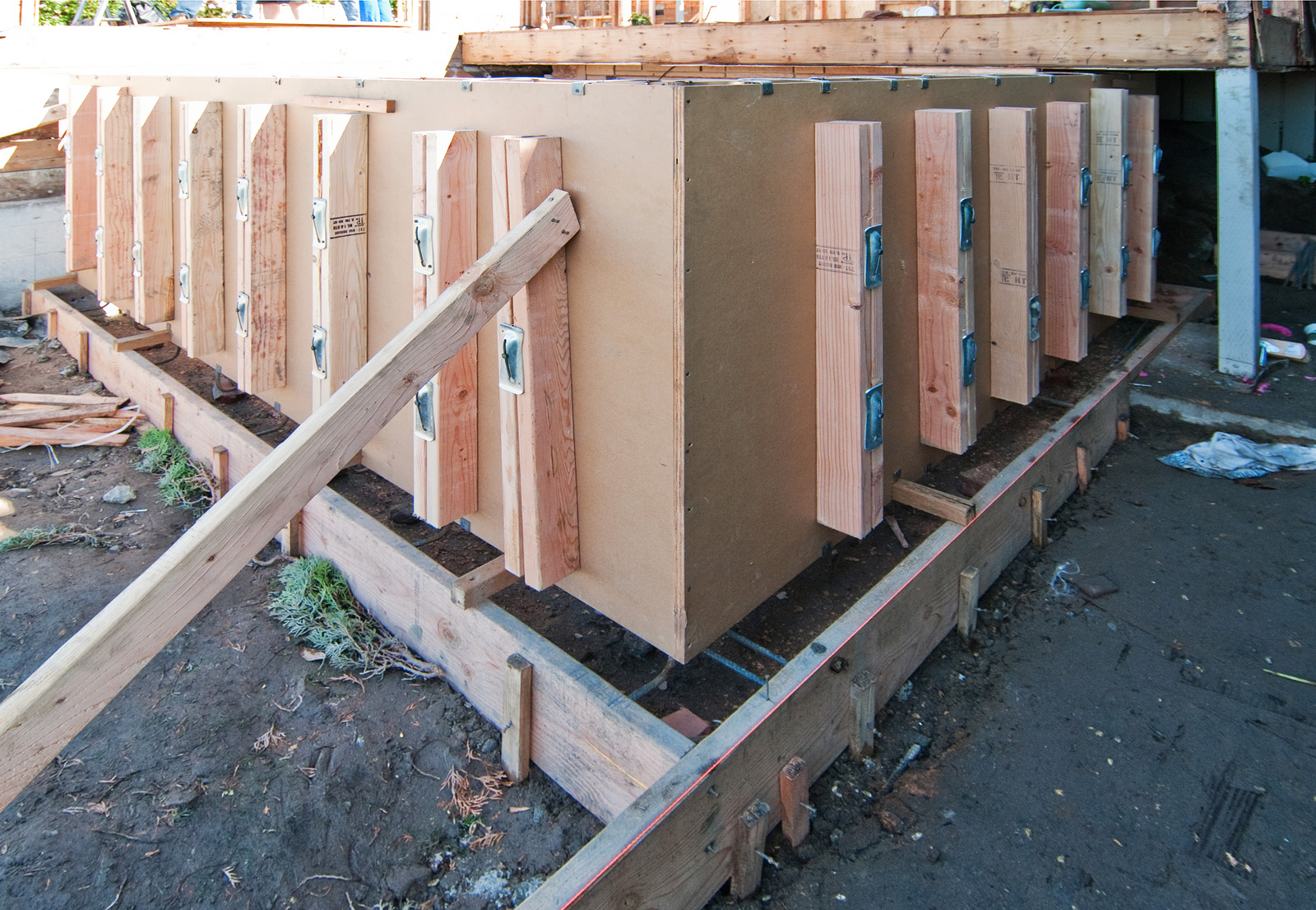
Traditionally, foundations are constructed in two phases: one concrete pour for the footing and one for the foundation wall (with the rebar and often a concrete key to hold them together). The trenches are dug for the footings, the footings are built in place, the rebar is properly located, and then the concrete is poured just for the footing. Once the concrete has had a chance to cure a bit (usually a day or two is sufficient here in the Pacific Northwest), the formwork is stripped. Then the formwork for the foundation walls is built, rebar is placed and the second concrete pour occurs for the foundation wall itself. Between curing times for the concrete, scheduling the concrete mixer for multiple trips, and possible weather conflicts, this can add up to a few days worth of time.
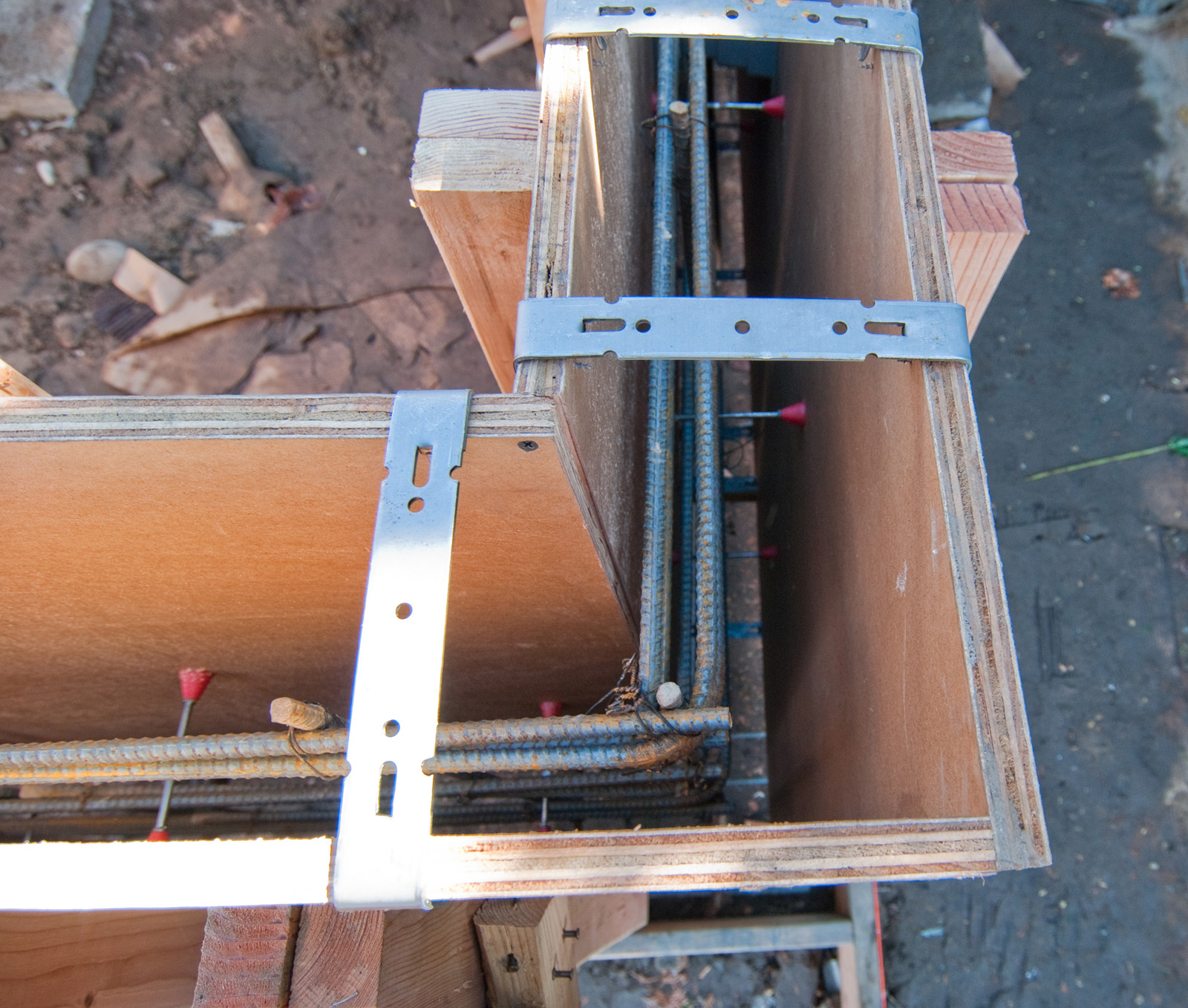
A mono-pour combines the footings and foundation walls into one single pour and shaves a day or two off the construction schedule. A couple of days aren’t a huge deal on a jobsite, but why not save a little time early on in the process when you can?
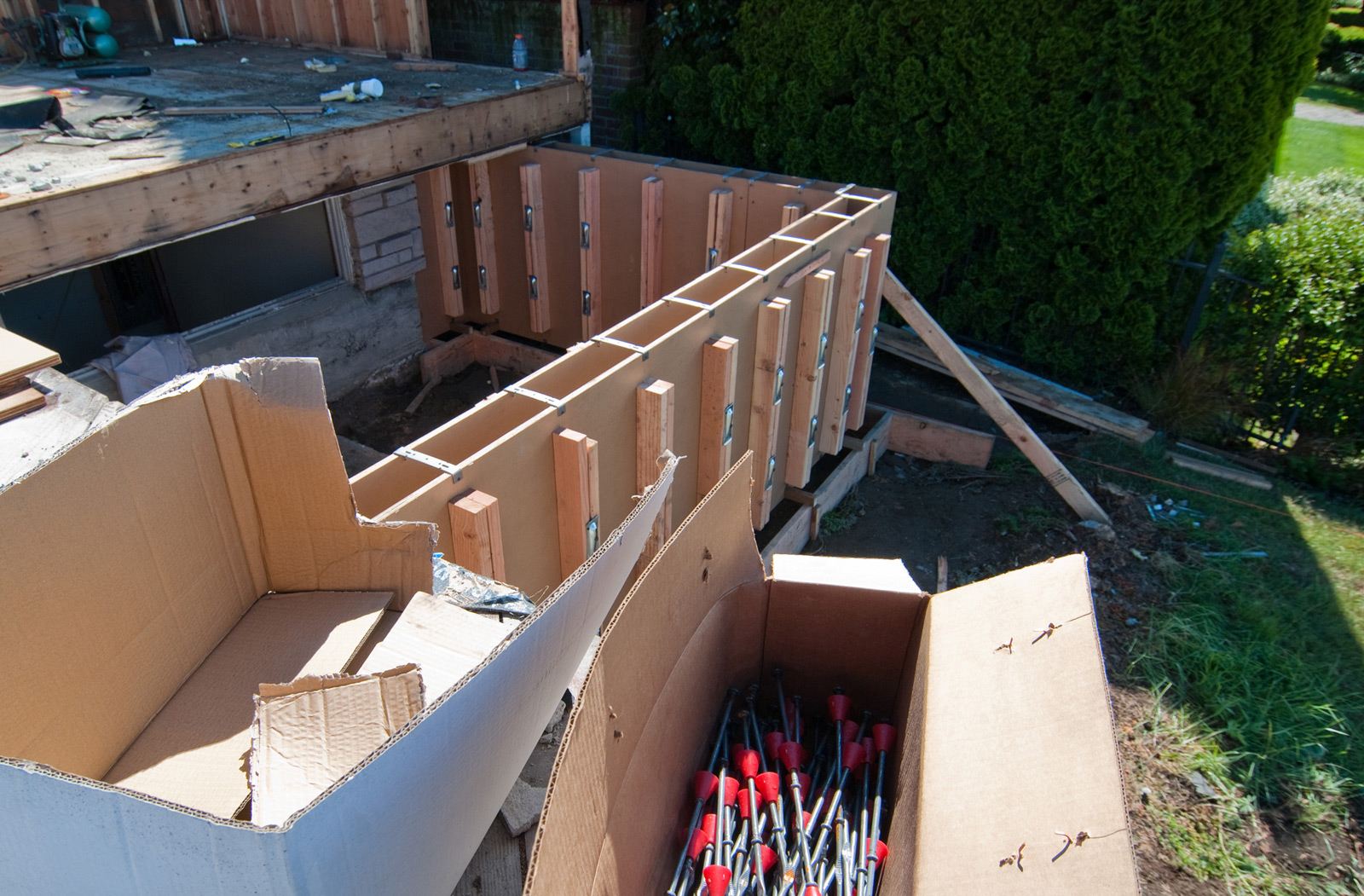
The deciding factor between doing a mono-pour versus two pours typically comes down to one simple factor: the amount of concrete needed to complete the job. If the amount of concrete required of the footings and foundation walls is less than 9 cubic yards (243 cubic feet) then one concrete mixer can handle it. Scheduling a concrete truck for a single delivery to the site simplifies things significantly. As soon as multiple trucks are required, that efficiency is lost and it makes more sense to do the footings and foundation walls in two separate pours.
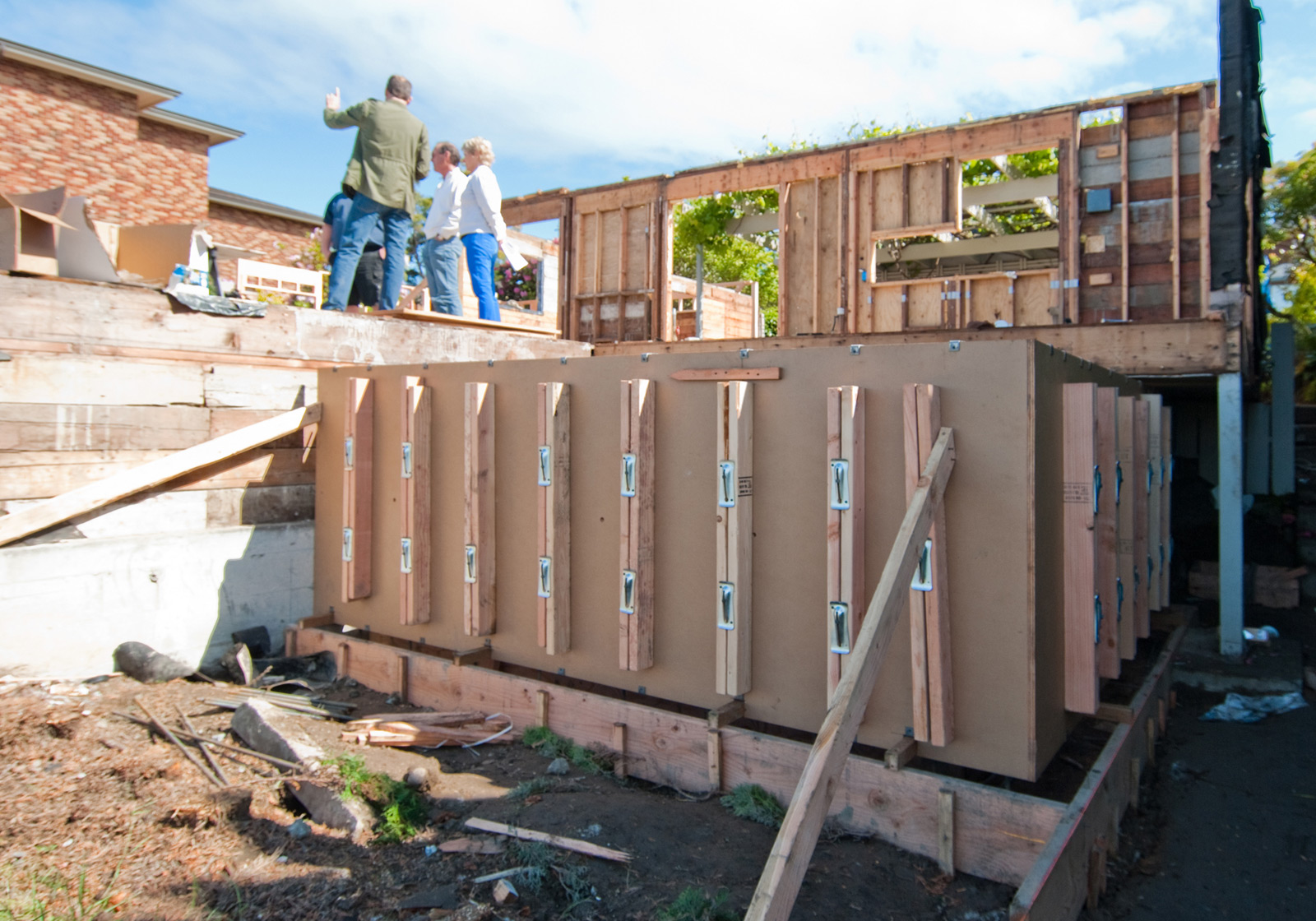
There are several considerations to properly accomplish a mono-pour.
1. The formwork for mono-pours is more difficult to build. It’s just harder to get in there and secure all the ties and rebar with the footing and foundation walls competing for space.
2. You can never have enough temporary bracing. When formwork fails, not only do you get to start from scratch, but there’s also a big, sloppy mess to clean up. Plus you look like a doofus in front of the concrete guy (who, by the way, will not help you clean up).
3. Different jurisdictions have different inspection requirements. Here in the Seattle area, inspectors like to see the formwork and rebar (prior to the pour) in four foot lifts — meaning that you can’t pour more than four feet vertically at a time. This can complicate or exclude taller walls from being good candidates for a mono-pour.
4. The concrete slump (a measure of the workability and consistency of the concrete when it comes out of the mixer) needs to be a bit stiffer so that it doesn’t flow out of the open ends of the footing formwork. If you want to get all technical, the slump should be 5 to 6 inches.
5. Using vibration techniques to remove the air bubbles from the poured concrete is a bit more delicate of a task with a mono-pour. The concrete at the footings needs to be monitored so that it doesn’t become too workable and flow out of the formwork.
Okay, you’ve eaten your spinach for the day.
Cheers from team BUILD





